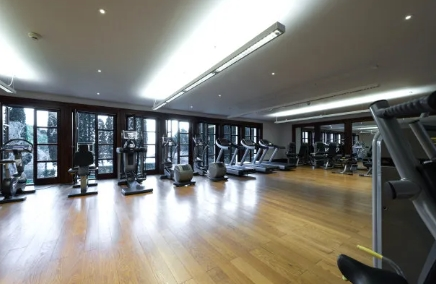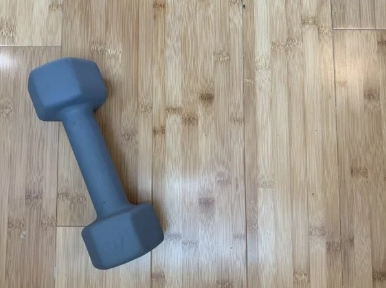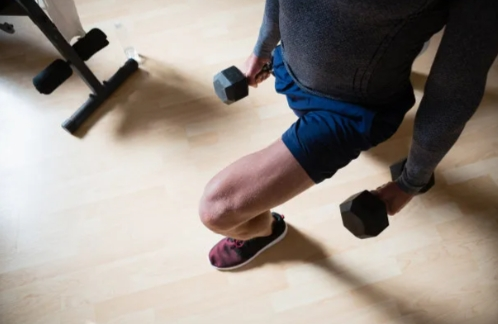Future Advantages and Features of Hardwood Flooring in Multifunctional Gyms
With the continued progress of technology and the diversification of sports demands, the application of hardwood flooring in future multifunctional gyms is expected to develop more extensively and professionally. Below are the potential advantages and features hardwood flooring may offer:
1. Integration of Smart Functions
With the rapid development of smart buildings and IoT technology, future hardwood floors may integrate intelligent features, making gym management more efficient and flexible.

- Smart Monitoring System: Hardwood flooring could embed sensors to monitor usage, temperature, humidity, and environmental factors in real time, as well as the activity intensity and ground pressure distribution of athletes. This data can help gym managers maintain and preserve the flooring, ensuring longevity and athlete safety.
- Adaptive Adjustment: With advancements in smart materials, parts of hardwood flooring may automatically adjust to temperature and humidity changes, offering optimal elasticity and friction to prevent unfavorable impacts on athlete performance caused by environmental changes.
2. Customized Design for Enhanced Athletic Performance
Future hardwood floors might be tailored for different sports disciplines, enhancing athlete performance and comfort.
- Optimized Athletic Performance: Elasticity, hardness, and friction levels of hardwood floors could be adjusted for specific sports. For example, basketball courts and badminton courts might have different elasticity setups to provide optimal bounce and comfort, improving athlete performance.
- Personalized Adaptation: With advancements in sports science, hardwood flooring might adjust according to an athlete’s weight or playing style. For instance, it could feature textures that better suit high-speed movement, minimizing the risk of slipping.
3. Environmental Sustainability
With growing environmental awareness and sustainability needs, the materials and production processes of hardwood flooring could become increasingly eco-friendly.
- Sustainable Wood Sources: Future hardwood floors may largely use wood from sustainably managed forests to ensure legal and eco-friendly sourcing. Recycled or synthetic wood might also be used to reduce reliance on forest resources.
- Low-VOC Coatings: To improve indoor air quality, future hardwood floors might use more eco-friendly coating materials, minimizing the emission of harmful substances and ensuring a healthier environment for athletes and spectators.
4. Enhanced Antibacterial and Anti-Pollution Features

With rising public health awareness, hardwood floors could incorporate advanced materials and technology to resist bacteria and pollution.
- Antibacterial Coating: To accommodate frequent use and heavy foot traffic in sports venues, hardwood floors may feature antibacterial coatings to effectively curb bacterial and viral growth, especially in multifunctional gymnasiums that host diverse activities.
- Anti-Pollution Surface Treatment: Advanced surface treatments may resist sweat, dirt, and beverages, keeping the floors clean for longer periods and reducing maintenance costs.
5. Adaptability to Higher Usage Frequencies
As gyms become more multifunctional, they will require flooring that can endure high-frequency use for events like competitions, training sessions, and recreational activities. Hardwood floors could further improve their durability and adaptiveness to harsher environments.
- High Abrasion Resistance: Future hardwood floors might use more wear-resistant materials or surface coatings to withstand intense use without deteriorating, extending their service life.
- Pressure and Impact Resistance: For high-intensity and multifunctional venues, hardwood floors could enhance pressure and shock resistance to prevent deformation or damage from vigorous activities.
6. Multifunctional Compatibility and Flexibility
Future hardwood floors will better adapt to the needs of multifunctional gyms, enabling swift changes in venue layouts and increased operational flexibility.
- Modular Floor Design: Hardwood floors might adopt modular designs, allowing for quick adjustments or replacements. For instance, the flooring layout could be swiftly switched between basketball and volleyball courts to meet different activity demands.
- Multi-Purpose Space: Beyond traditional sports events, future hardwood floors could also support cultural performances, concerts, exhibitions, and other activities. The properties of the flooring—such as hardness and elasticity—could be adjusted to suit various event types, ensuring an optimal experience.
7. Improved Athlete Experience

Future hardwood flooring designs will focus more on the physical sensations of athletes, enhancing game comfort and safety.
- Comfort and Recovery: Advances in sports science could lead to hardwood floors featuring recovery-focused functions, such as shock absorption technologies that reduce athlete fatigue and improve performance.
- Adapting to an Aging Society: With a globally aging population, hardwood flooring could cater to elderly individuals or rehabilitation centers by enhancing stability and safety to reduce the risk of injuries during training or exercise.
In the future, hardwood flooring in multifunctional gyms will incorporate more intelligent, eco-friendly, personalized, and multifunctional technologies beyond its core features of elasticity, durability, and comfort. As sports facilities evolve and demands diversify, hardwood flooring will continue to play a unique role in enhancing athletic performance, ensuring athlete safety, and supporting the multifunctionality of venues.





